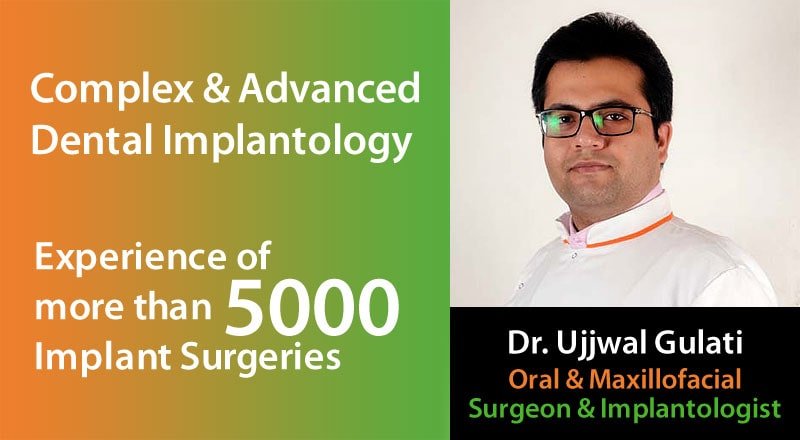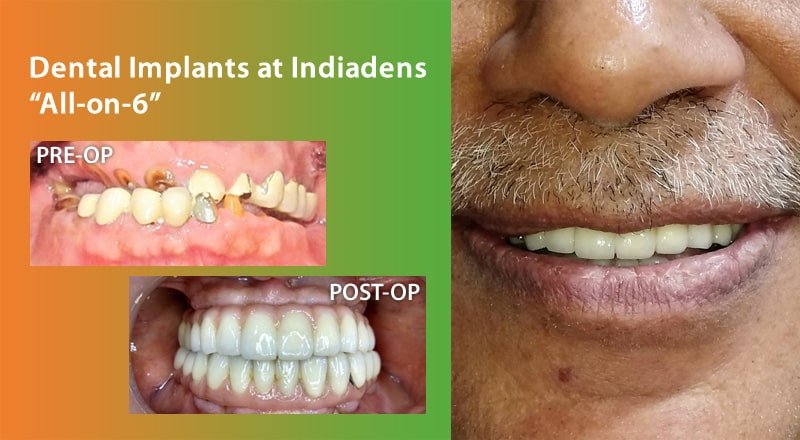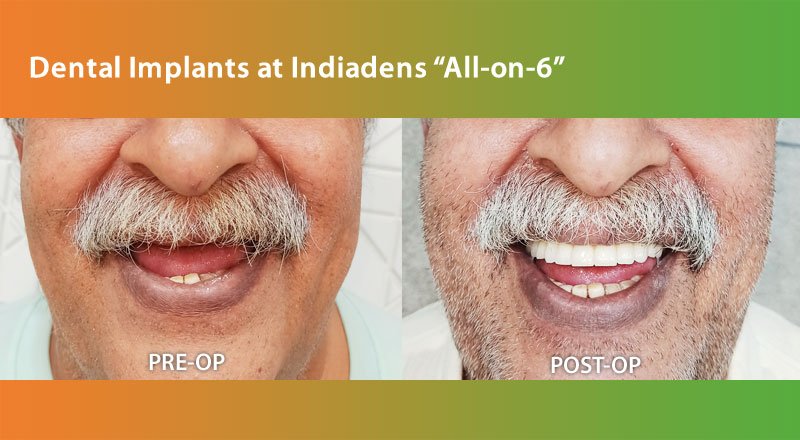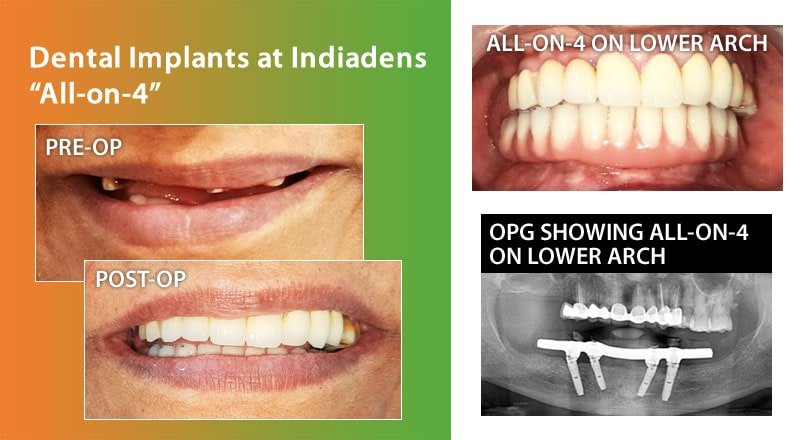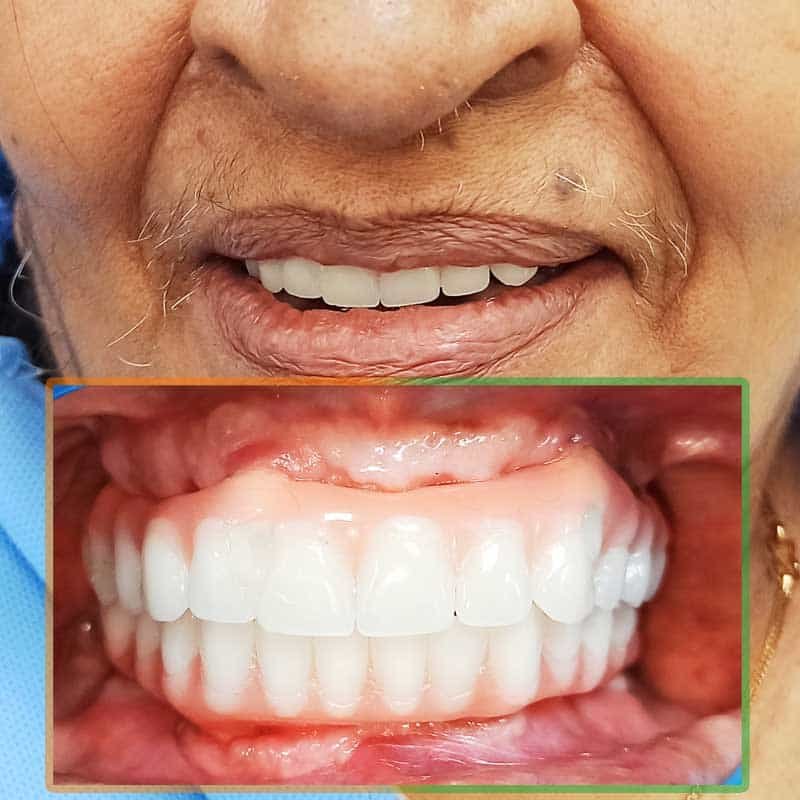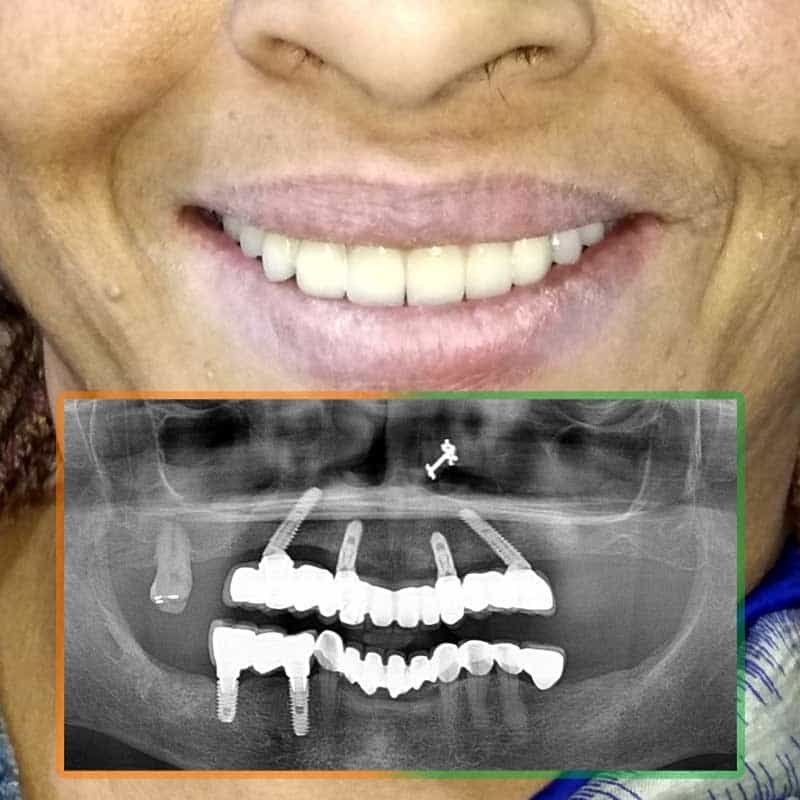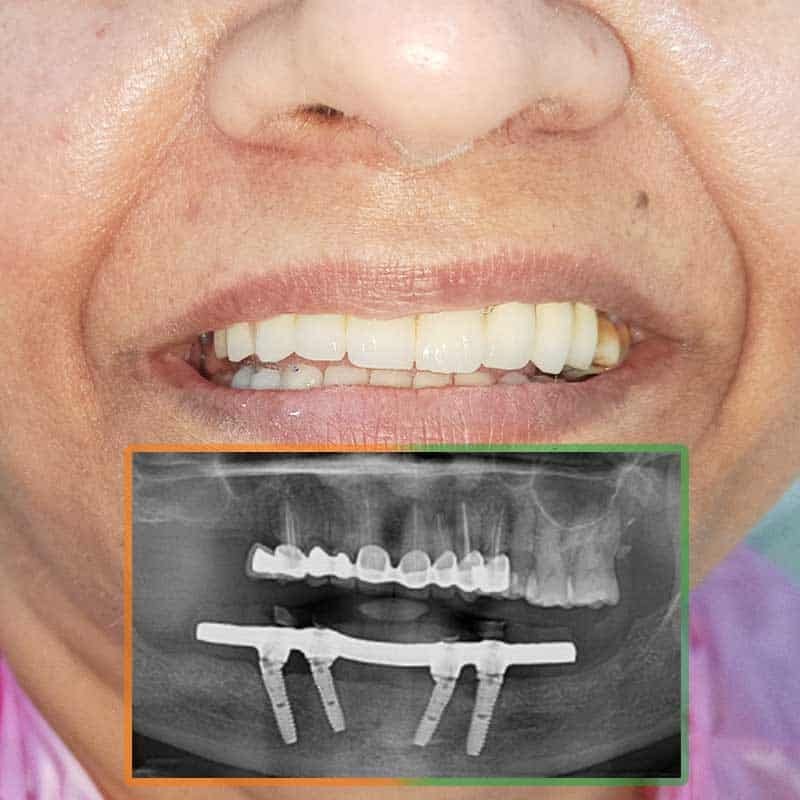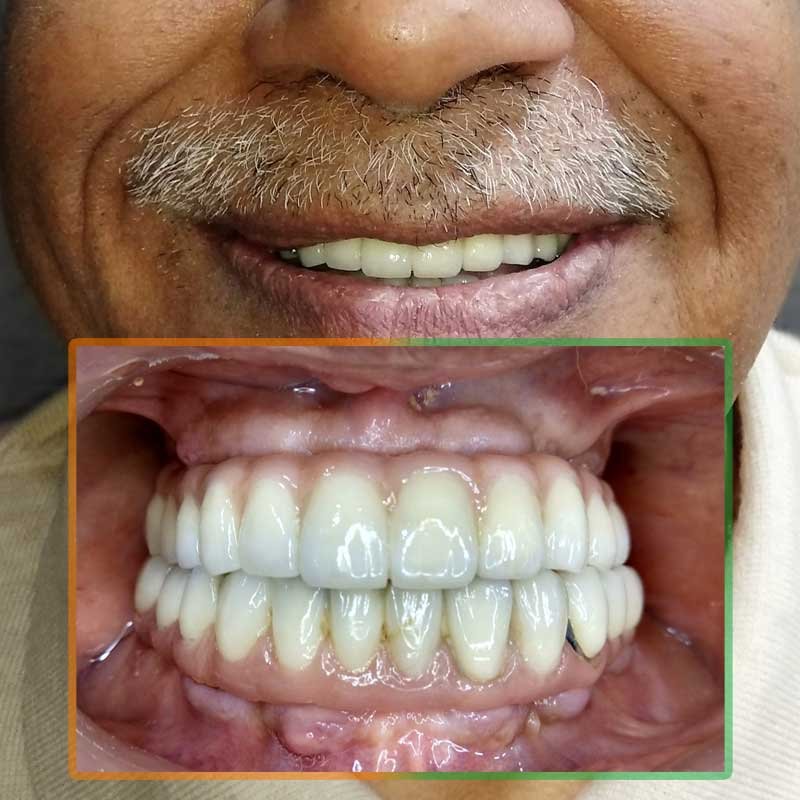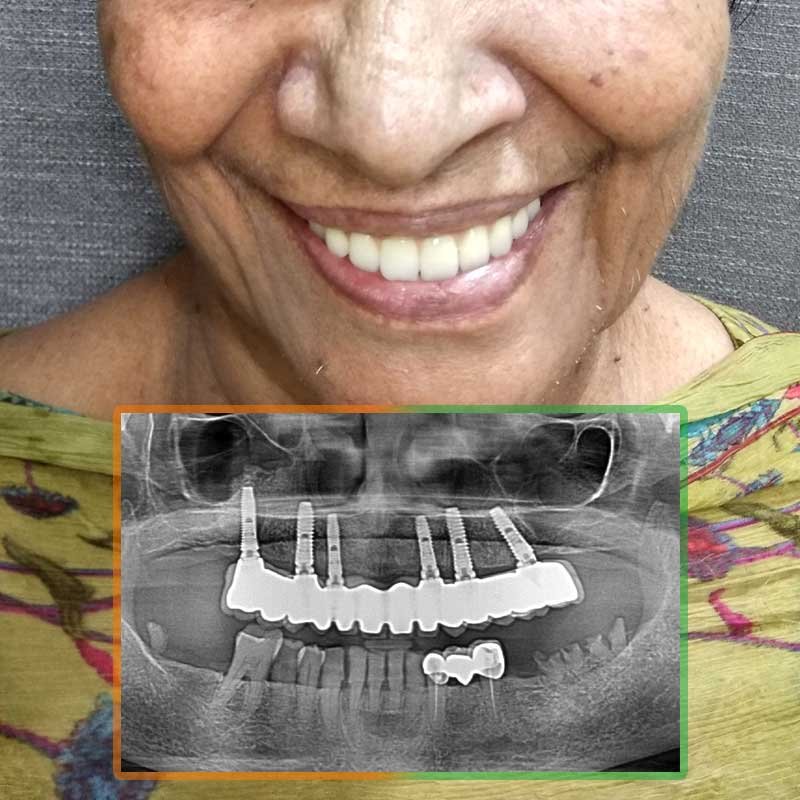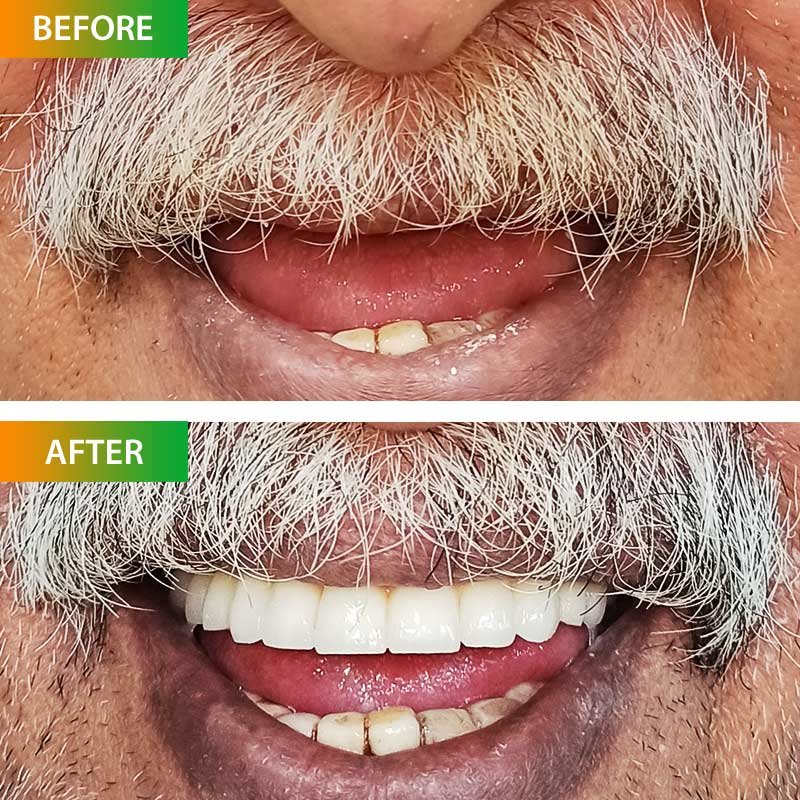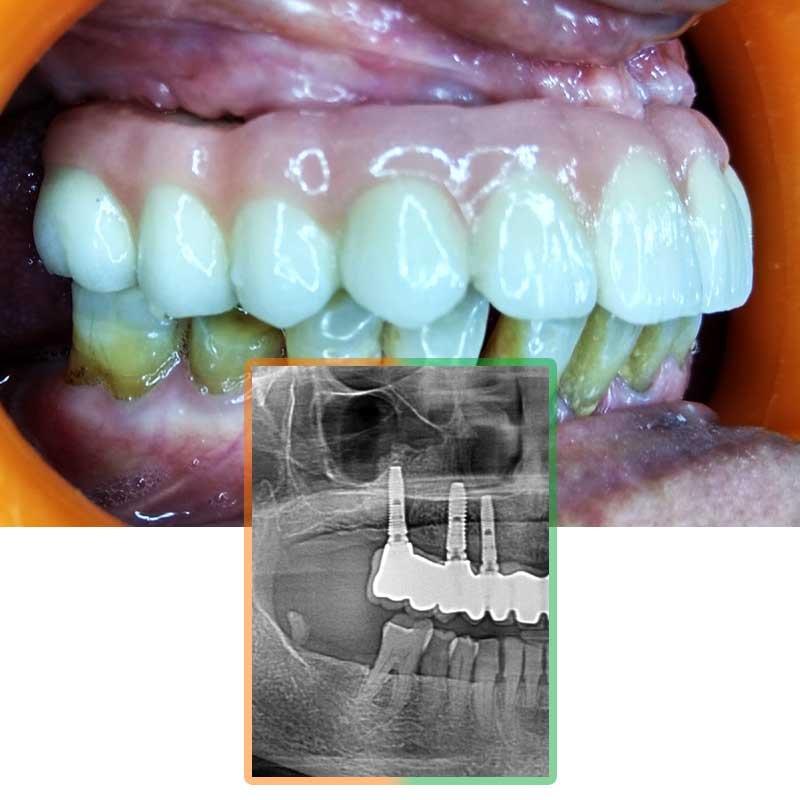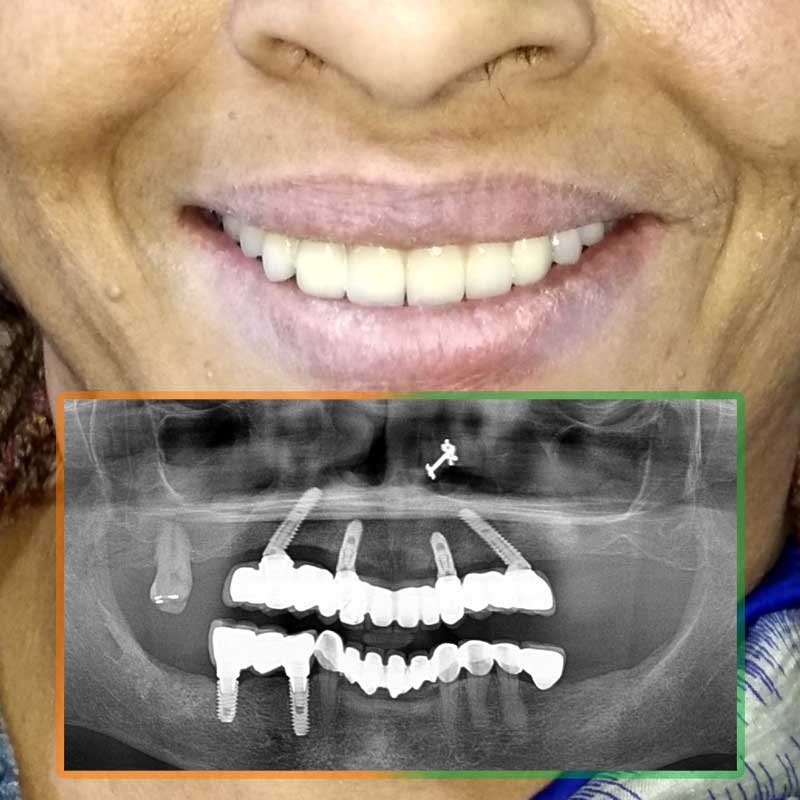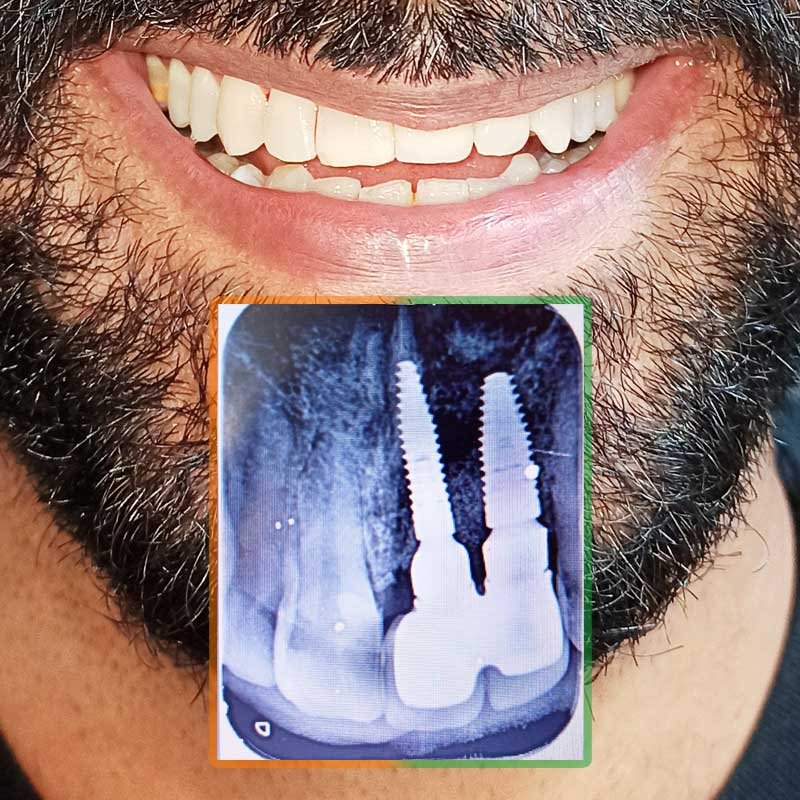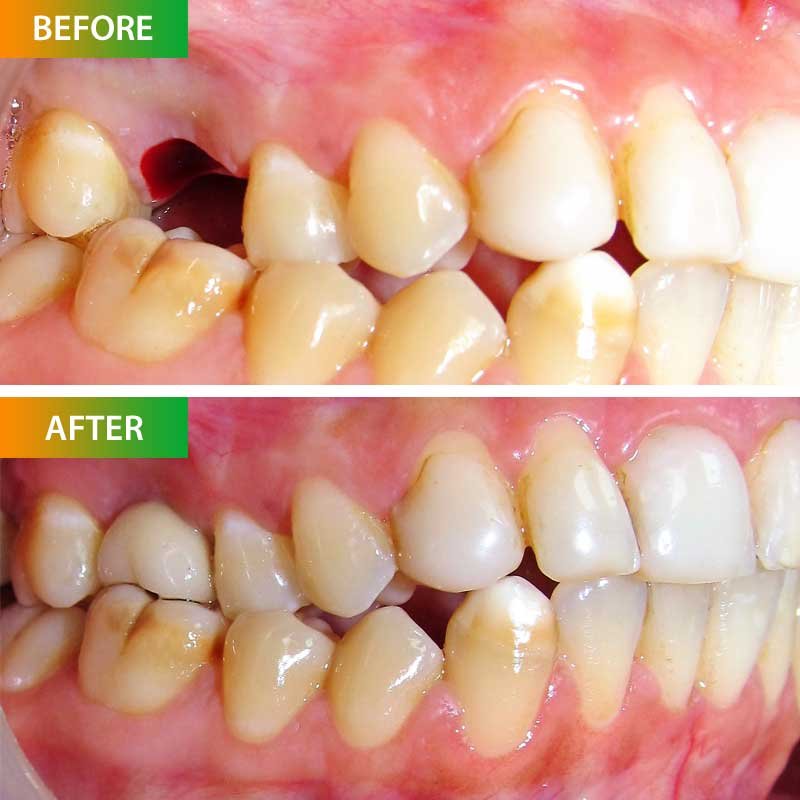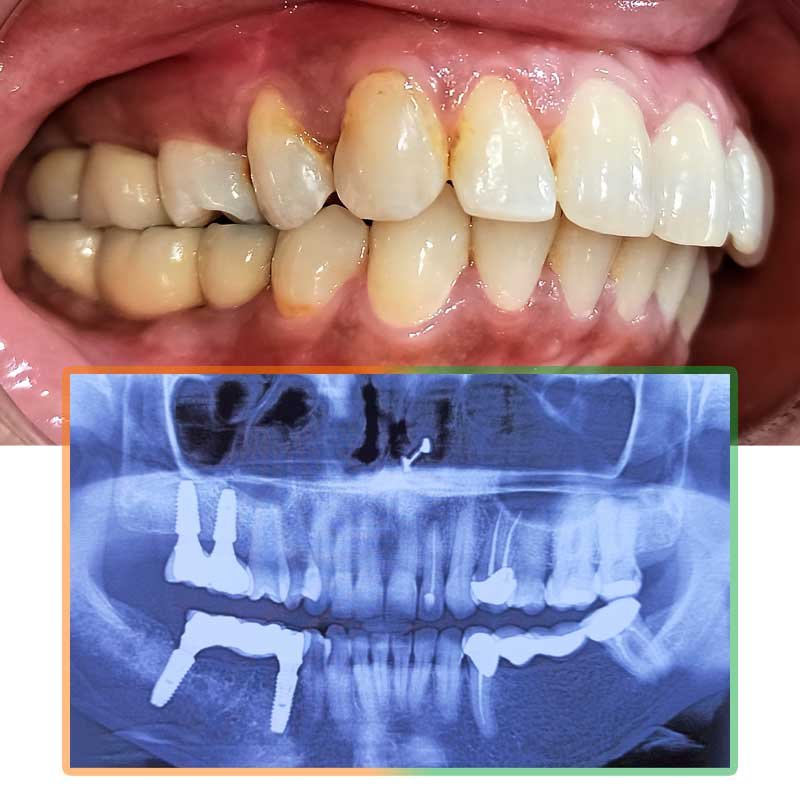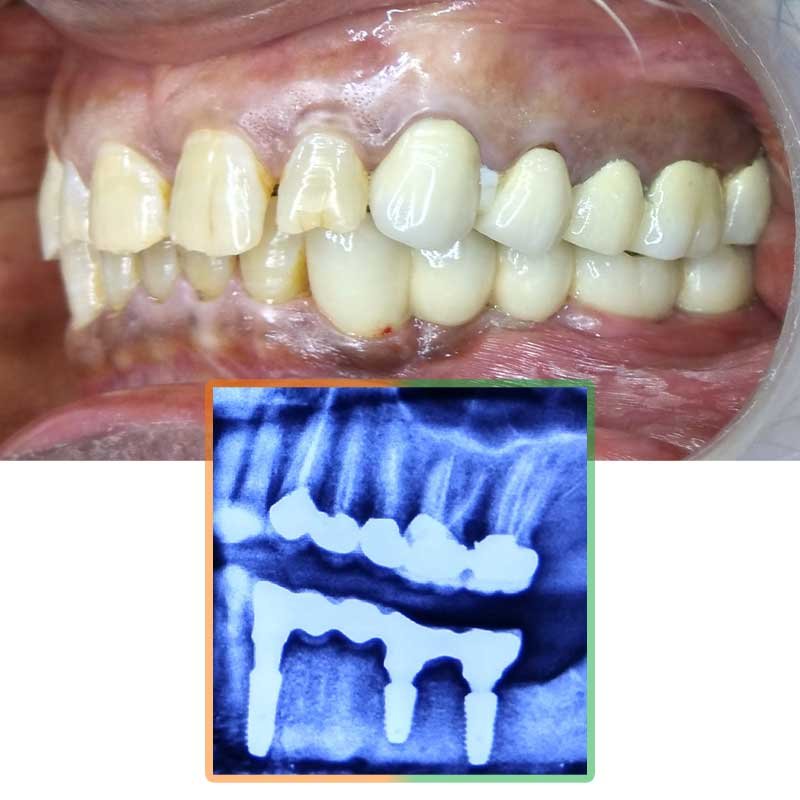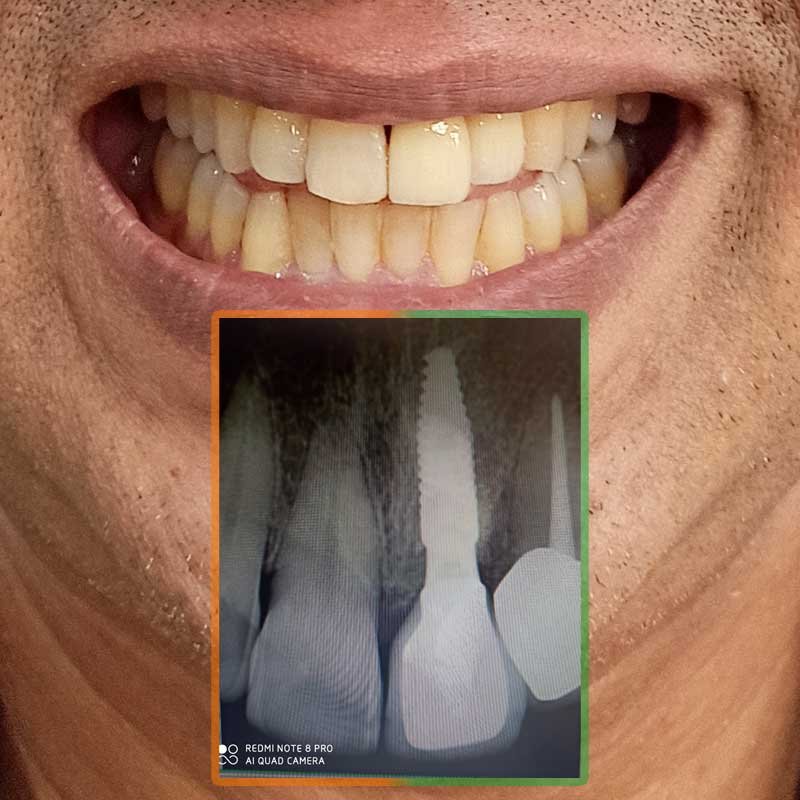Frequently Asked Questions
This is a very subjective question. The current technology allows us to place the teeth over the implant in the same sitting. However these are provisional restorations and need to be changed after a certain period of time. However, immediate placement of teeth over implants depends upon many factors and cannot be generalized to all the patients.
Conventionally, the duration of implant treatment may vary between 2 months to even more than a year depending upon the quality and quantity of bone present.
Diagnosis: You may have to undergo certain radiological (X-ray, CBCT) and haematological (blood test) investigations before the treatment. This helps us in treatment planning and gives us a very close estimate of the time and duration of treatment. The treatment options are discussed with the patient and treatment plan is finalized only after that.
Phase 1 (Surgery): This involves placement of dental implants or/and bone regeneration procedures if required. Healing screws or temporary teeth may/may not be placed in the same sitting, depending upon many factors which are explained in detail to the patient.
There has to be a gap of 2-6 months between Phase 1 and Phase 2
Phase 2 (Surgery): This phase is dedicated to placing healing screws or bone trainers to make a healthy channel of gums around the path from which teeth would be connected to the implants inside the bone. It takes 3-6 weeks for gums to heal around the gingival formers. However, in most of the cases, this phase is integrated with the first phase.
Phase 3 (Placement of teeth): Phase 3 can start immediately after Phase 2 gets over. Once the implants have united with the bone (osseointegration), the next step is to place the teeth over them. This phase may take anywhere between 5 days to 3 months. It depends on the number of teeth, the make of teeth, the requirement of temporary teeth, requirement of any adjuvant procedure.
The cost of the treatment varies and depends upon many factors
Company of implant: It is one of the major factors determining the cost of the procedure. Implants of companies of worldwide repute like Straumann, Nobel biocare, Dentium, Osstem, Biohorizon, Dentsply, etc are all available at Indiadens.
Type of tooth: It is the second most important factor in determining the overall cost of the procedure. For eg. A casted PFM over ready-made abutment costs less than an all-ceramic crown over a custom zirconia abutment.
Complexity of the procedure: Sometimes we have to do additional surgical procedures to enhance bone or modify soft tissue around the implant which may not be very important for immediate results but are extremely necessary for long term function and success of an implant. These procedures also add on to the overall cost of the implant prosthesis.
Infrastructure and technology: It is an extremely important component which determines the success rate of implants. A sterile operative setting equipped with the latest armamentarium which is upgraded regularly is the need of the hour.
The experience and expertise of the doctor: This is one of the paramount factors which would determine not only the success rates but also the cost of the dental implants.
Location of practice: An office located in a major city like Delhi would have more overhead expense compared to a semi-urban practice.
We at Indiadens offer a unique blend of all the above virtues at highly affordable rates. The cost of a single implant at Indiadens starts from Rs 18000/- only
Kindly fill up our implant analysis form and receive your free quote (estimate of treatment).
It can be immediately after placement of implants (0-3 days) or as late as 6 months to one year. You need to understand two terminologies before you get an answer to the above question; Immediate placement and immediate loading. The immediate placement and immediate loading are two different concepts.
Immediate placement is the placement of dental implant immediately after removal of the tooth from a socket. It is possible and preferred in most of the cases. However, in very few cases we need to wait for 3-6 months before placement of dental implant.
Immediate loading is the placement of the tooth over an implant immediately after placement of dental implant. Usually, a waiting period of 2-6 months is recommended for placement of teeth after insertion of dental implants. It is proven that this is the time taken for dental implants to unite with the jaw bone.
However, modern technology has permitted us to place the teeth immediately with predictable results in many cases. These teeth are temporary in nature and ideally should be replaced after a certain period of time (normally 6months to 1 year). This concept of immediate placement of teeth has several limitations and should not be generalized to all the patients. If applied in the wrong cases, it has the potential to cause failure of dental implants. So, the decision is taken based upon many factors and immediate loading/placement of teeth cannot be generalized to all the patients. Please remember that implants are a long term substitute for your natural teeth and planning and execution of treatment should be done keeping that in mind.
This concept is utilized in cases where the whole jaw needs replacement. This requires strategic placement of 4 or 6 implants in each arch over which 12-14 teeth can be placed. When a full arch (single jaw) receives fixed teeth over 4 implants, it is called “All-on-4” and similarly if the number of implants increases 6, it is called “All-on-6”.
The teeth which are placed over these implants are supported by a single framework made of metal or PEEK. So, it is a single-piece hybrid screw retained prosthesis over multi unit abutments. This concept has gained a lot of popularity in recent times. More number of implants is preferred but the final treatment plan depends upon the availability of bone and willingness of the patient for grafting procedures.
In our practice, we personalize the treatment plan based on many factors such as availability of bone, quality of bone, medical condition of the patient, willingness for bone grafting procedures, age of the patient, dietary considerations, built of the patient, etc.
As they say “Age is just a number”. It doesn’t mean that age is not at all a factor to be taken into consideration. Medical fitness or general health of the patient is more important. A patient may be medically fit to undergo dental implants at the age of 90 and may be deemed unfit even at 45-50 years of age.
The eldest patient operated on for dental implants by doctors working at INDIADENS (Dr Ujjwal Gulati) has been 89+ years.
There are hundreds of companies that manufacture dental implants. At our practice, we have shortlisted few companies based on the following criteria
1. Global presence
2. Global reputation
3. Long term research-based success rates
4. Best quality in respective price segment
5. Good service and availability in India
It is a very common question that how long are my implant teeth going to last. It is a general belief that implant supported teeth are life time. The term “life time” is very subjective. “Life time” has different meanings for a 70 year old and 20 year old patient. Literature suggests long term success rates of implants in high nineties. The success rate not only depends upon the skill of your implant surgeon and quality of dental implant but also the medical condition and maintenance by the patient. Poor oral hygiene/uncontrolled systemic disease/use of tobacco in any form, etc are a few factors which potentially contribute to success or failure of dental implants.
These procedures are necessary if the bone volume is deficient for an implant of adequate diameter and length to be placed into the bone. These can be categorized into three main headings for the purpose of understanding
Sinus lift surgery: The upper jaw(maxilla) has air filled space called “maxillary sinus” present above the roots of posterior(back) teeth. This space tends to increase at the expense of bone if the teeth have been absent for a long time. Also, chronic loss of teeth causes disuse atrophy of bone. These two factors cause the bone volume to become deficient over a period of time.This deficiency doesn’t allow adequate/recommended diameter of the implant to be placed. In such cases, bone substitutes are placed between the membrane of sinus and bone (sinus floor).These bone substitutes when placed with proper technique and in sterile settings, mature into dense bone which allows the implants to be anchored into it. The sinus lift surgery is of two types: Direct/lateral window and crestal/indirect. Direct/lateral window procedure is used when the bone is highly deficient. Both of these procedures have very high success rates when done in a proper sterile environment.
Guided bone regeneration: There can be instances where the bone is deficient over the crestal area or absence of a wall (complete or partial) in cases of immediate extraction or extremely low width of bone for accommodating the recommended diameter of an implant. In such cases, the bone graft (from the patient's body/animal bone/synthetic bone) is placed alone or in combination with a thin layer of tissue called a membrane. This helps in regeneration of bone in a desired region. This may be done along with the implant if the bone volume deficiency is not beyond a certain limit. Else, first the bone has to be regenerated and once that has happened, the implant can be placed.
Ridge split procedure: In case of deficiency of width of bone, one of the procedures involves widening of the bone of mandible by splaying apart the two hard layers of bone and placing implant in between. The empty space left is filled with bone graft and covered on top with a membrane.
